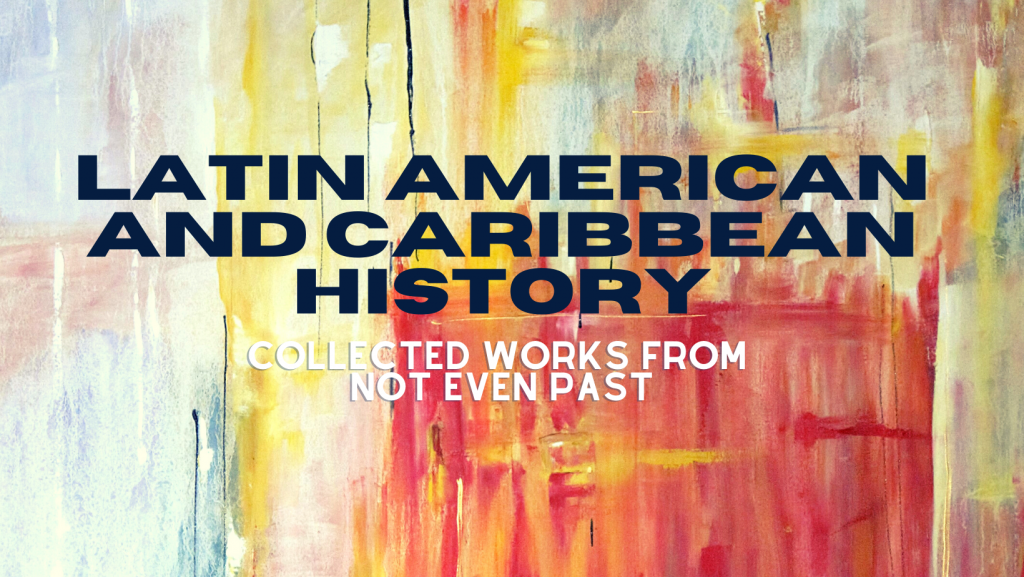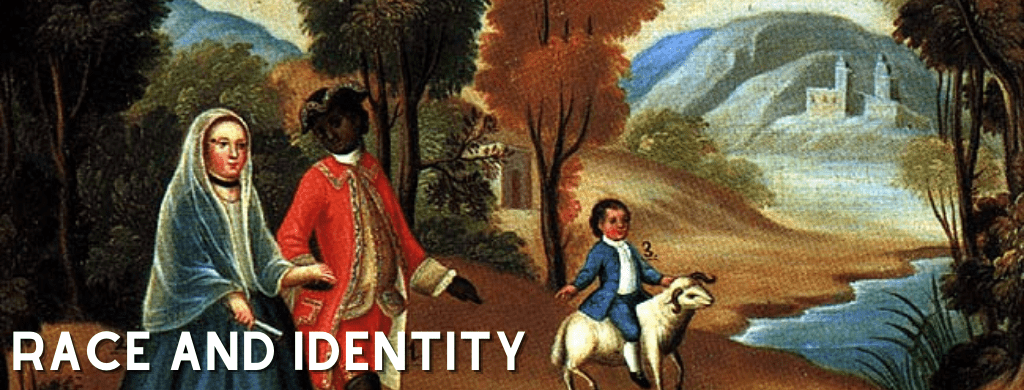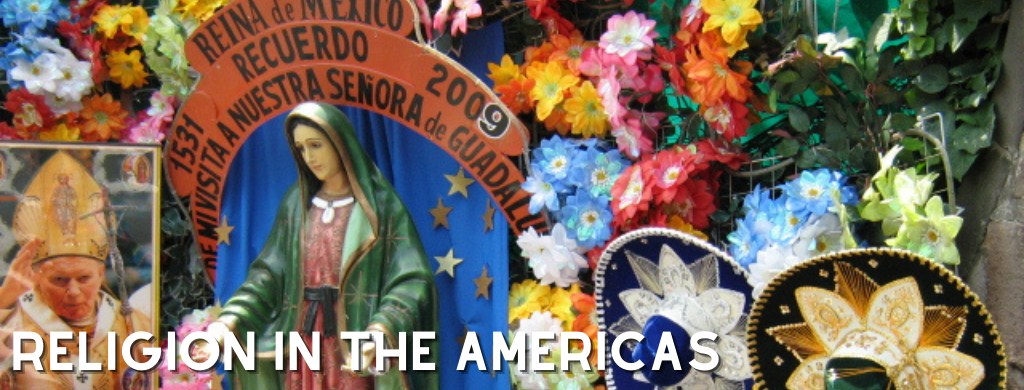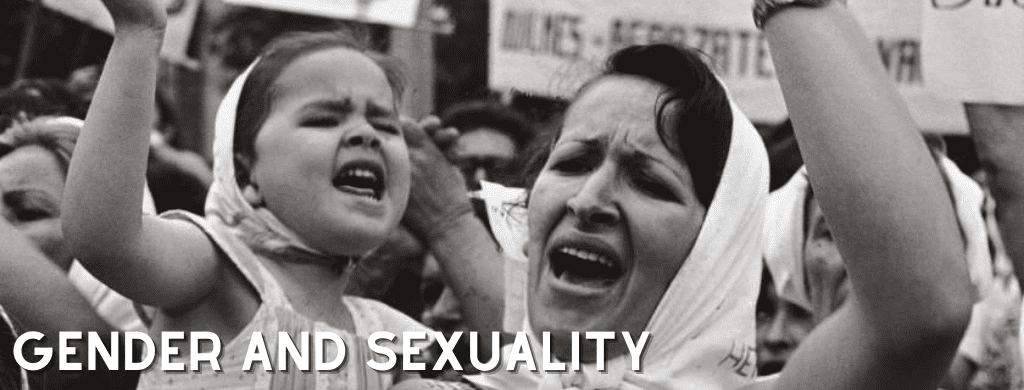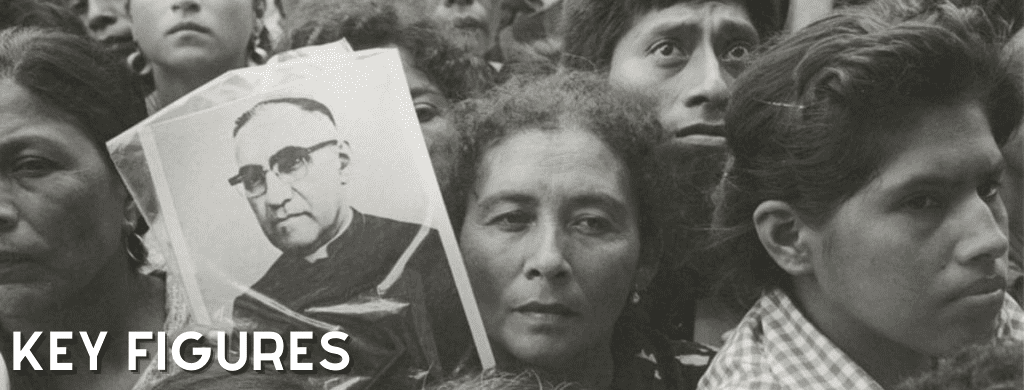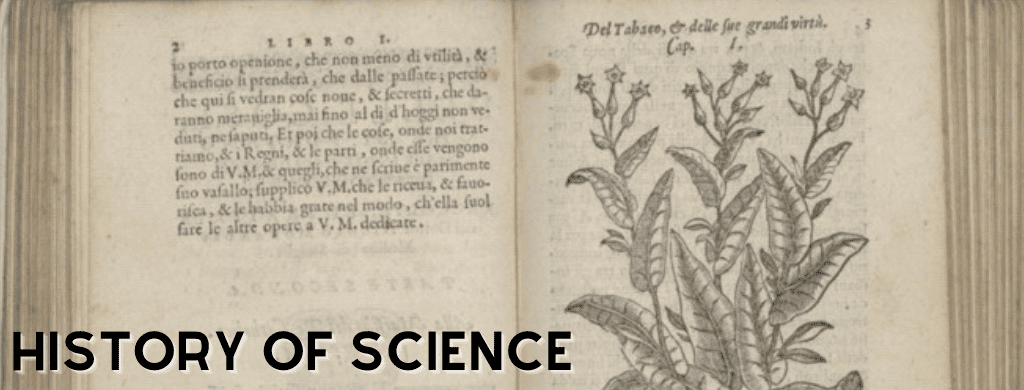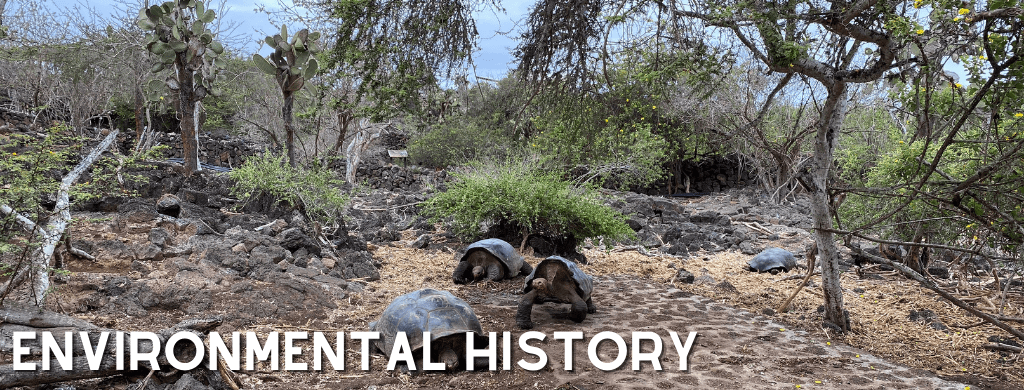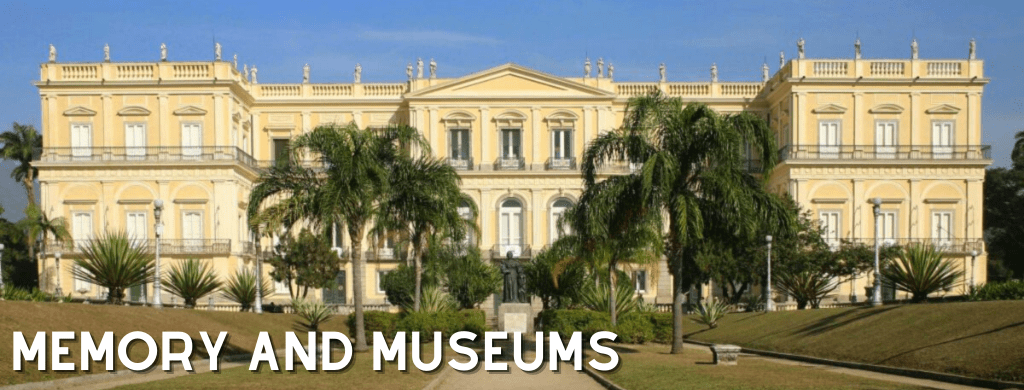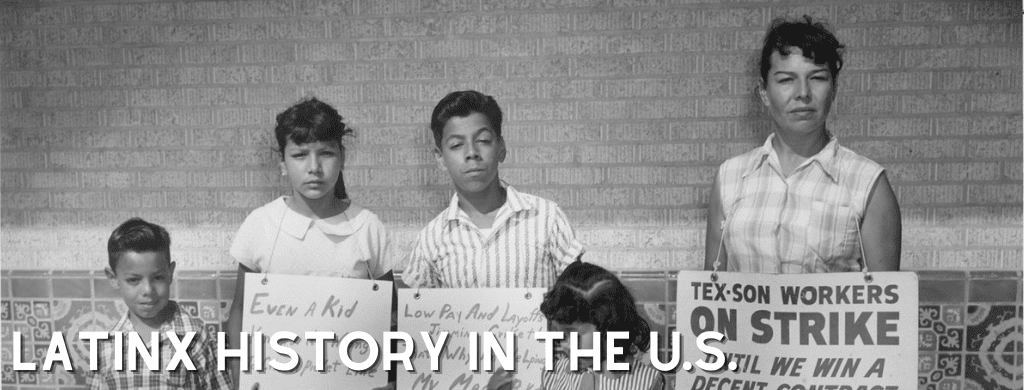Since its creation in 2010, Not Even Past has published a huge range of articles connected to Latin American and Caribbean History. To mark our new partnership with the Benson Latin American Collection, we have collected all these articles in one compilation page organized around 17 topics. These articles (156 in total) are a testament to the remarkable research conducted by faculty and graduate students at the University of Texas at Austin but they also draw more broadly from the work of groundbreaking scholars across the world. Together we believe they constitute an important resource for the field.
Topics
- Conquest and Empire
- Indigenous History
- Slavery
- Race and Identity
- Religion in the Americas
- Gender and Sexuality
- Key Figures
- History of Science
- Environmental History
- Cold War
- Digital Archives and Resources
- Memory and Museums
- Material Culture
- Music and Film
- Crime and Law
- Latinx History in the United States
- Migration Studies
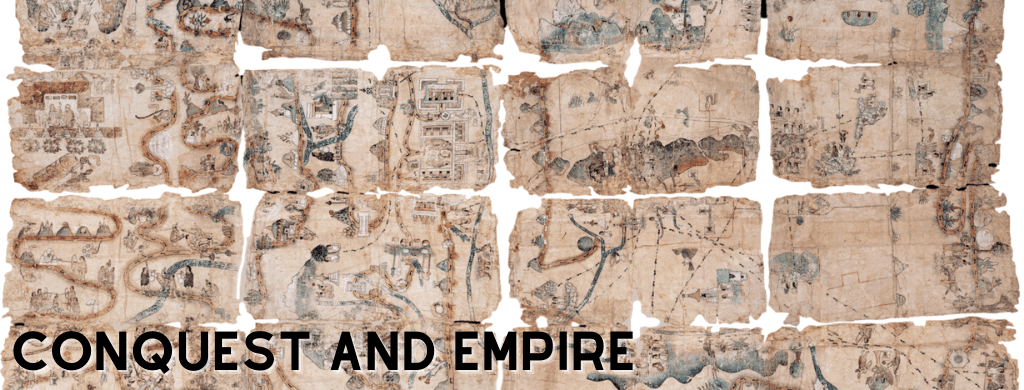
Conquest and Empire
- Empires of the Atlantic World: Britain and Spain in the Americas, 1492-1830 by J.H. Elliott (2007) by Renata Keller
- Promiscuous Power: An Unorthodox History of New Spain by Martin Nesvig (2018) by Jorge Cañizares-Esguerra
- When Montezuma Met Cortés: The True Story of the Meeting that Changed History, by Matthew Restall (2018) by Jorge Cañizares-Esguerra
- Works in Progress: The Radical Spanish Empire by Jorge Cañizares-Esguerra and Adrian Masters
The Radical Spanish Empire focuses on an early modern empire of paper, Spanish America, that experienced radical forms of social mobilization and governance that today we associate with “modernity.” Yet these very new forms of radical modernity led paradoxically to the constitution of hierarchical ancien regimes unlike any other in Europe. Paperwork created Spanish America by first encouraging massive political participation in the business of government, collapsing through mediation and alliances European and Amerindian power elites. This same participation, however, led to the creation of top-down archives that not only slowed down the pace of change but also created a peculiarly resilient new ancien regime, neither indigenous nor European. By the late sixteenth century any individual who had royal favor, a robust personal archive, and money could secure status and generally overcome challenges about their status and ancestry. Our book seeks to explain this paradoxical trajectory of the early modern Spanish American polity, poised between radicalism (cultural, political, social and epistemological) and the immobility which we associate with societies of orders.
By Jorge Cañizares-Esguerra and Adrian Masters
- The King’s Living Image: The Culture and Politics of Viceregal Power in Colonial Mexico by Alejandro Cañeque (2004) by Marcus Golding
- Acapulco-Manila: the Galleon, Asia and Latin America, 1565-1815 by Kristie Flannery
- The Poetics of Piracy: Emulating Spain in English Literature, by Barbara Fuchs (2013) by Christopher Heaney
- Mapping the Country of Regions: The Chorographic Commission of Nineteenth-Century Colombia, by Nancy P. Appelbaum (2016) by Madeleine Olson
- Colour of Paradise: The Emerald in the Age of Gunpowder Empires, by Kris Lane (2010) by Maria José Afanador-Llach
- Patrons, Partisans, and Palace Intrigues: The Court Society of Colonial Mexico 1702-1710 by Christoph Rosenmüller (2008) by Susan Zakaib
- The Archaeology and History of Colonial Mexico by Enrique Rodríguez Alegría (2016) by Brittany Erwin
- Outlaws of the Atlantic, by Marcus Rediker (2014) by Kristie Flannery
Indigenous History
- Sculpture and Power in Ancient Mesoamerica by Julie Guernsey
I began to realize that the transition of this set of very consistent attributes – closed eyes, swollen lids, and puffy faces – from small-scale ceramics to monumental stone sculptures spoke volumes. These changes in sculpture, and the contexts in which they were used, were related to the other key social dynamics that characterized this period, such as state formation. Late Preclassic rulers appropriated the imagery and themes previously used in the domestic sector in the form of figurines and their associations with ancestors and moved them into the large, public plazas where they could proclaim their power as rulers and lay claim to their own privileged history and lineage. This imagery, which was ancient and powerful and about kinship, became a formidable tool when moved out of the hands of all and into the domain of rulers alone. The jowly facial features, the bloated bodies, and the closed eyes invoked not only dead or long-gone ancestors, but potent lineage.
By Julie Guernsey
- Bárbaros: Spaniards and Their Savages in the Age of Enlightenment by David J. Weber (2005) by Zachary Carmichael
- Global Indios: The Indigenous Struggle for Justice in Sixteenth-Century Spain, By Nancy van Deusen (2015) by Justin Heath
- Indigenous Intellectuals: Knowledge, Power, and Colonial Culture in Mexico and the Andes edited by Gabriela Ramos and Yanna Yannakakis (2014) by Abisai Pérez Zamarripa
- 2012 and the End of the World: The Western Roots of the Maya Apocalypse by Matthew Restall and Amara Solari (2011) by Kristie Flannery
Slavery
- Cross-Cultural Exchange in the Atlantic World; Angola and Brazil during the Era of the Slave Trade by Roquinaldo Ferreira (2012) by Jorge Cañizares-Esguerra
- The Cross-Cultural Exchange of Atlantic Slavery by Samantha Rubino
- Quilombo dos Palmares: Brazil’s Lost Nation of Fugitive Slaves, by Glenn Cheney (2014) by Edward Shore
The destruction of Palmares failed to stem the emergence of hundreds, perhaps thousands of smaller quilombos throughout Brazil. Nor did it prevent countless other acts of resistance that undermined planter domination even after the abolition of slavery in 1888. Cheney describes how the legend of the Quilombo dos Palmares inspired a 1988 constitutional amendment that extended land rights to the descendants of fugitive slaves. Thousands of “modern quilombos” have petitioned for government recognition while organizing mass movement in the countryside that has won concessions from local landowners and pressured elected officials to implement affirmative action policies in other areas. In 2015, the specter of Palmares looms large over Brazil.
By Edward Shore
- Slave Rebellion in Brazil: The Muslim Uprising of 1835 in Bahia by João José Reis (1993) by Michael Hatch
- Blacks of the Land: Indian Slavery, Settler Society, and the Portuguese Colonial Enterprise in South America by John M. Monteiro (2018) by Jorge Cañizares-Esguerra
- Mapping The Slave Trade: The New Archive (No. 10) by Henry Wiencek
- Seeds of Empire: Cotton, Slavery, and the Transformation of the Texas Borderlands, 1800-1850, By Andrew Torget (2015) by Jorge Cañizares-Esguerra
Race and Identity
- Purchasing Whiteness: Race and Status in Colonial Latin America by Ann Twinam
- Purchasing Whiteness in Colonial Latin America by Ann Twinam
- Imperial Subjects: Race and Identity in Colonial Latin America edited by Andrew B. Fisher and Matthew D. O’Hara (2009) by Kristie Flannery
- The Disappearing Mestizo, by Joanne Rappaport (2014) by Adrian Masters
- The Myth and the Massacre: A Murder on Brazil’s Black Consciousness Day by Marcelo José Domingos
Historically, racism in Brazil has not been legally-sanctioned or discursively explicit, but it can be observed in statistics on education, health, and job employment, as well as life expectancy. Today, the numbers are undeniable: more than 50,000 people die violently in Brazil in a country without wars, and the majority are Black males under thirty. João Alberto Silveira Freitas, in this sense, was already a survivor of systemic racial violence and social exclusion until he met his death at the hands of security guards while buying groceries. Despite such grim numbers, however, conservative groups have sustained and defended a lasting idea of racial democracy that far outlived Brazil’s military dictatorship. For those reasons, the Vice President’s proclamation of the absence of racism in Brazil, on the occasion of a Black man’s murder on the Day of Black National Consciousness, is both unforgivable but also sadly entirely predictable.
By Marcelo José Domingos
- Infrastructures of Race: Concentration and Biopolitics in Colonial Mexico by Daniel Nemser (2017) by Haley Schroer
- Terms of Inclusion: Black Intellectuals in Twentieth-Century Brazil by Paulina Alberto (2011) by Gabrielle Esparza
- Frank A. Guridy on the Transnational Black Diaspora by Frank A. Guridy
- Casta Paintings by Susan Deans-Smith
- Antonio de Ulloa’s Relación Histórica del Viage a la America Meridional by Haley Schroer
- Remembering Willie “El Diablo” Wells and Baseball’s Negro Leagues by Edward Shore
- The Quilombo Activists’ Archive and Post-Custodial Preservation, Part I by Edward Shore
- The Quilombo Activists’ Archive and Post-Custodial Preservation, Part II by Edward Shore
- History and Advocacy: Brazil in Turmoil by Edward Shore
Religion in the Americas
- The Power and the Glory by Graham Greene (2003) by Mathew J. Butler
- Devoted to Death: Santa Muerte, the Skeleton Saint by R. Andrew Chesnut (2011) by Janine Jones
- Ordinary Lives in the Early Caribbean: Religion, Colonial Competition, and the Politics of Profit, by Kristen Block (2012) by Ernesto Mercado-Montero
In Ordinary Lives in the Early Caribbean, Kristen Block explores the role of religious doctrines as rational, strategic discourses in the seventeenth-century Caribbean. Certainly, Christianity shaped inter-imperial diplomacy, economic projects, and “national” identities. Yet, Block argues that powerless and disenfranchised individuals embraced or denied religious doctrines at will, in order to obtain advantageous political outcomes. Block illustrates that religion was not only a force of social inclusion and exclusion, but also a persuasive tool that allowed ordinary people to shape allegiances, perform Catholic or Protestant identities, and pursue justice and opportunity.
By Ernesto Mercado-Montero
- J. Cañizares-Esguerra’s Puritan Conquistadors by Jorge Esguerra-Cañizares
- A Texas Historian’s Perspective on Mexican State Anticlericalism by Madeleine Olson
- Performing Piety: Making Space Sacred with the Virgin of Guadalupe by Elaine A. Peña (2011) by Cristina Metz
- For Greater Glory (2012) by Cristina Metz
Gender and Sexuality
- The Defiant Heretic: The Scandal of Justa Mendez by Haley Schroer
- The Politics of a Handkerchief: Personal Thoughts on the Motif of Female Activism in Argentina by Paula O’Donnell
As a historian, I was impressed with the visual symbolism inherent in the handkerchiefs. I was immediately reminded of the photographs many of us have seen of elderly Argentine women defying a murderous military dictatorship. Las Madres de la Plaza de Mayo were middle-aged and elderly women who lost children and husbands to the military junta that ruled Argentina between 1976 and 1983. At great personal risk, these women met at the presidential palace every Thursday, beginning in 1977, to hold a vigil, wearing images of their missing kin on strings around their necks and plain white handkerchiefs on their heads.
It is reasonable to speculate that most of Las Madres de la Plaza de Mayo would not have considered themselves feminists, and it is even less likely they would have supported abortion rights. The historian Diane Taylor has pointed out that these women mobilized to defend their roles as mothers and wives, and they exploited traditional representations of femininity (purity and subservience to male family members) to mobilize shame. Even so, they remain national icons of feminine resistance in the public sphere.
By Paula O’Donnell
- Dolores del Río: Beauty in Light and Shade, By Linda B. Hall (2013) by Ann Twinam
- The Dictator’s Seduction: Politics and the Popular Imagination in the Era of Trujillo by Lauren Derby (2009) by Lauren Hammond
- No Mere Shadows: Faces of Widowhood in Early Colonial Mexico, by Shirley Cushing Flint (2013) by Ann Twinam
- Trading Roles: Gender, Ethnicity, and the Urban Economy in Colonial Potosí by Jane Mangan (2005) by Zachary Carmichael
- Dulcinea in the Factory: Myths, Morals, Men, and Women in Colombia’s Industrial Experiment, 1905–1960 by Ann Farnsworth-Alvear (2000) by Lizeth Elizondo
- Plaza of Sacrifices: Gender, Power, and Terror in 1968 Mexico by Elaine Carey (2005) by Andrew Weiss
- Dispossessed Lives: Enslaved Women, Violence, and the Archive by Marisa Fuentes (2016) by Tiana Wilson
Key Figures
- Philip of Spain, King of England, by Harry Kelsey (2012) by Mark Sheaves
- Romero by Nathan Stone
- Por Ahora: The Legacy of Hugo Chávez Frías by Edward Shore
- Che: A Revolutionary Life by Jon Lee Anderson (2010) by Edward Shore
- Che Guevara’s Last Interview by Jonathan C. Brown
- Che’s Afterlife: The Legacy of an Image by Michael Casey (2009) by Franz D. Hensel Riveros
- The King of Adobe: Reies López Tijerina, Lost Prophet of the Chicano Movement by Lorena Oropeza (2019) By Micaela Valadez
- Francisco de Miranda: A Transatlantic Life in the Age of Revolution 1750-1816, by Karen Racine (2002) By Mark Sheaves
History of Science
- 15 Minute History – Scientific, Geographic & Historiographic Inventions of Colombia, interview with Lina del Castillo
- Crafting a Republic for the World in 19c Colombia by Lina del Castillo
Early republican experiments in Spanish America occurred at a time when there were no models to follow. While republicans in Europe battled monarchists and the clerical old regime, while they increasingly imagined their republics as colonial empires of racial inferiors, and while republicans like Thomas Jefferson and James Madison in the United States built their republic on white supremacy and industrialized slavery in cotton plantations, a generation of Spanish American sociologists, economists, anthropologists, and political philosophers became the world’s republican vanguard.
One of their most resilient inventions was rhetorical. Spanish Americans consistently portrayed the period of Spanish rule as obscurantist, tyrannical, and corrupt. This discourse of Latin America’s “colonial legacies” is pervasive today. During the early nineteenth century, Spanish Americans invented distinct “colonial legacies” to legitimize their intellectual and political work in rejecting Spanish rule. They believed science could diagnose, treat, and excise those pernicious colonial legacies. Their radical new form of political modernity required they take a systematic approach to understanding and changing their society, their economic structures, and their political processes. As perceived obstructions changed over time, so did proposed solutions, which in turn contributed to the invention of new philosophies, anthropologies, sociologies, geographies, and sciences.
By Lina del Castillo
- Bad Blood: Newly Discovered Documents on US Funded Syphilis Experiments by Philippa Levine
- Death is a Festival: Funeral Rites and Rebellion in Nineteenth-Century Brazil by João José Reis (2007) by Felipe Cruz
- Philippa Levine on Eugenics Around the World by Philippa Levine
- Notes from the field: Retracing Sixteenth-Century Steps in Seville by Mark Sheaves
Environmental History
- The Deepest Wounds: A Labor and Environmental History of Sugar in Northeast Brazil by Thomas D. Rogers (2010) by Elizabeth O’Brien
- The Empire of the Dandelion: Environmental History in Al Crosby’s Footsteps by Megan Raby
- Enclaves of Science, Outposts of Empire by Megan Raby
At the end of 1960, near Cienfuegos, Cuba, on the Soledad estate of a U.S.-owned sugar company, the American Director and Cuban staff of Harvard’s Atkins Institution began packing up their scientific equipment. The Cuban Revolution had caught up with them. Director Ian Duncan Clement, his wife, Vivian, and lab technician Esperanza Vega worked quickly to put the station’s herbarium, library, and lab “in stand-by condition.” The station’s horticulturalist, Felipe Gonzalez, and his assistants pruned the trees in the station’s arboretum, preparing them “to withstand a period of neglect.”
By Megan Raby
- On the Backs of Tortoises: Darwin, the Galápagos, and the Fate of an Evolutionary Eden by Elizabeth Hennessy (2019) by Timothy Vilgiate
- Naming and Picturing New World Nature by Maria Jose Afanador
- Banana Cultures: Agriculture, Consumption & Environmental Change in Honduras and the United States by John Soluri (2005) by Felipe Cruz
- Fordlandia by Greg Grandin (2010) by Cristina Metz
- Visible Empire: Botanical Expeditions and Visual Culture in the Hispanic Enlightenment, by Daniela Bleichmar (2012) by Christina Marie Villarreal
- Great Books and a Film on the Amazon by Seth Garfield
- Seth Garfield on the Brazilian Amazon by Seth Garfield
- I am Tourism/Yo Soy Turismo by Blake Scott and Andres Lombana-Bermudez
- UNESCO Designates Costa Rica’s Ancient Stone Balls a World Heritage Site by Emily Jo Cureton
- Underground Santiago: Sweet Waters Grown Salty by Nathan Stone
Cold War
- Precarious Paths to Freedom: The United States, Venezuela, and the Latin American Cold War (2016) by Marcus Oliver Golding
- Out of the Rubble: Doctors Strikes and State Repression in Guatemala’s Cold War by Ilan Palacios Avineri
Medical professionals are often viewed as apolitical, but what happens when they come to challenge a government? On February 4th, 1976, a cataclysmic earthquake brought an embattled Guatemala to its knees. Amidst a raging civil war, the terremoto (earthquake) razed countless houses and killed roughly 21,000 people in just 39 seconds. Thousands more emerged from the rubble with serious injuries and over a million, disproportionately Mayas from rural regions, were left homeless.
By Ilan Palacios Avineri
- Paper Cadavers: The Archives of Dictatorship in Guatemala (2014) by Marcus Oliver Golding
- The Last Colonial Massacre: Latin America in the Cold War by Greg Grandin (2004) by Cristina Metz
- Latin America’s Cold War by Hal Brands (2010) by Michelle Reeves
- Khrushchev’s Cold War: The Inside Story of an American Adversary, by Aleksandr Fursenko and Timothy Naftali by Marcus Oliver Golding
- Civil War and Daily Life: Snapshots of the Early War in Guatemala by Vasken Markarian
- The Argentine Silent Majority: Middle Classes, Politics, Violence, and Memory in the Seventies (2014) by Paula O’Donnell
- Remembering Pinochet’s Chile: On the Eve of London 1998 by Steven Stern (2006) by Monica Jimenez
- A Rare Phone Call from One President to Another by Jonathan C. Brown
- The Doubtful Strait/El Estrecho Dudoso by Ernesto Cardenal (1995) by Adrian Masters
- Trotsky: Downfall of a Revolutionary by Bertrand M. Patenaude (2009) by Andrew Straw
- Kissinger’s Shadow, by Greg Grandin (2015) by Clay Katsky
- Propaganda or Progress? by Virginia Garrard
- The Battle of Chile by Nathan Stone
- Conflicting Missions: Havana, Washington, and Africa, 1959-1976 by Piero Gleijeses (2002) by Yana Skorobogatov
- Rodolfo Valentín González Pérez: An unusual disappearance by Nathan Stone
- Secrecy and Bureaucratic Distancing: Tracing Complaints through the Guatemalan National Police Historical Archive by Vasken Markarian
- Cuba’s Revolutionary World by Jonathan C. Brown
On January 2, 1959, Fidel Castro, the rebel comandante who had just overthrown Cuban dictator Fulgencio Batista, addressed a crowd of jubilant supporters. Recalling the failed popular uprisings of past decades, Castro assured them that this time “the real Revolution” had arrived. Castro’s words proved prophetic not only for his countrymen but for Latin America and the wider world.
The political turmoil that rocked a small Caribbean nation in the 1950s became one of the twentieth century’s most transformative events. Initially, Castro’s revolution augured well for democratic reform movements then gaining traction in Latin America. But what had begun promisingly veered off course as Castro took a heavy hand in efforts to centralize Cuba’s economy and stamp out private enterprise. Embracing the Soviet Union as an ally, Castro and his lieutenants, Che Guevara and Raúl Castro, sought to export the socialist revolution abroad through armed insurrection. Chairman Khrushchev’s early support aided the Cuban revolutionaries in defeating of the CIA invasion of Cuban émigré fighters at the Bay of Pigs. However, he subsequently lost his job over the 1962 Missile Crisis that pushed the superpowers to the brink of nuclear war.
By Jonathan C. Brown
- How Washington Helped Fidel Castro Rise to Power by Jonathan C. Brown
- Sad and Luminous Days: Cuba’s Struggle with the Superpowers after the Missile Crisis by James G. Blight & Philip Brenner (2002) by Aragorn Storm Miller
Digital Archives and Resources
- Digital Archive Review: Latin American and Caribbean Digital Primary Resources by Brittany Erwin
- Digital Archive Review – Más de 72 by Ashley Nelcy García
- The Public Archive: María Luisa Puga and the 1985 Mexico City Earthquake by Ashley Garcia
- History of Modern Central America Through Digital Archives by Vasken Makarian
- Digital Tools for Studying Empire: Transcription and Text Analysis with Transkribus by Brittany Erwin
- Digital Archive Review – Imágenes y relatos de un viaje por Colombia by Alexander Chaparro-Silva
- Between King and People: Digital Tools for Studying Empire by Brittany Erwin
- The Public Archive: The Gálvez Visita of 1765 by Brittany Erwin
- A Graphic Revolution: The New Archive (No. 19) by Joseph Parrott
- Digital Archive Review – Ticha: A Digital Text Explorer for Colonial Zapotec by Jessica Sánchez Flores
- Radio & Community by John McKiernan-González
- The Texas State Historical Association Launches the Tejano History Handbook Project
- Narco-Modernities by Edward Shore
Memory and Museums
- More than Archives: Dealing with Unfinished History by Jimena Perry
- Too Much Inclusion? Museo Casa de la Memoria, Medellín, Colombia by Jimena Perry
- The National Museum of Anthropology in San Salvador by Brittany Erwin
- Time to Remember: Violence in Museums and Memory in Colombia, 2000-2014 by Jimena Perry
The Colombian violence of the 1980s, 1990s, and early 2000s, the subject of my work, left many victims. It also left many survivors of atrocities who needed some kind of closure in order to continue with their lives. During these decades, civilians found themselves caught among four armed actors: the National Army, paramilitaries, guerrillas, and drug lords, who were fighting over the control of land and civilians. These groups committed brutalities such as kidnappings, disappearances, forced displacement, bombings, massacres, and targeted murders. In order to cope with and overcome the trauma caused by all this violence, diverse communities set up museums and displays. These acts of memory and reconciliation demonstrate that people and communities remember and represent the past differently. Some exhibitions portray violence, others focus on personal histories and others turn to the strength their cultural traditions give them. They contain different meanings and intentions, and take a variety of forms including traveling museums, murals, houses, kiosks, and even cemeteries devoted to remembering the ones who are gone. But they all work towards the same goal: never again.
By Jimena Perry
- An Anticipated Tragedy: Reflections on Brazil’s National Museum introduced and compiled by Edward Shore
- My Cocaine Museum, by Michael Taussig (2004) by Jimena Perry
- History Museums: The Hall of Never Again by Jimena Perry
- History Museums: The Center for Memory, Peace, and Reconciliation, Bogotá, Colombia by Jimena Perry
Material Culture
- Colonial Latin America through objects: Teaching with Jorge Cañizares-Esguerra
- Of Merchants and Nature: Colonial Latin America Through Objects (No. 1) by Diana Heredia López
- Nanban Art: Colonial Latin America Through Objects (No. 2) by John Monsour
- Andean Tapestry: Colonial Latin America Through Objects (No. 3) by Irene Smith
- Colonial Chalices: Colonial Latin America Through Objects (No. 4) by Lillian Michel
- Feeding of the Body and Feeding of the Soul: Colonial Latin America Through Objects (No. 5) by Pauline Holdencq
- Historical Objects: Latin America
Music and Film
- Hello, Hello Brazil: Popular Music in the Making of Modern Brazil by Bryan McCann (2004) by Franz D. Hensel Riveros
National identity has been both a dream and a nightmare for historians. When they attempt to historicize the concept, it becomes a thick web of actors, motives, and unintended consequences. Exploring the “invention of tradition” underlying modern national identities proves an appealing but extremely difficult task. In Hello, Hello Brazil, Bryan McCann offers a suggestive method to master this process. By tracing the emergence of Brazilian popular music, he successfully shows how the “traditional” samba was composed in an unequal exchange between regional musicians and composers, state officers, recording managers, radio producers, and radio broadcasters. The history of modern Brazilian music must be understood, then, within the broader debate on “Brazilianness.”
By Franz D. Hensel Riveros
- Episode 109: The Tango and Samba, interview with Andreia Menezes
- Getz/Gilberto Fifty Years Later: A Retrospective by Edward Shore
- Camila (1984) by Ann Twinam
- The Old Man and the New Man in Revolutionary Cuba by Frank A. Guridy
- Hollywood’s Brazil: Rio (2011) by Seth Garfield
Crime and Law
- In Defense of the Crime Story by Diego A. Godoy
Judicial records usually provide the empirical grist underpinning historical studies of crime, but journalism is the lifeblood of the field. The efforts of reporters, editors, photographers and illustrators have allowed researchers to resurrect bygone crimes, often in forensic detail. In the more recent Latin American past, for instance, the intrepid sleuthing of journalists—whose “narco libros” populate the Spanish-language shelves of book retailers—has spared academics from treading on paths far more perilous than graduate school could have ever prepared them for. Their revelations pertaining to the inner-workings of criminal syndicates and their state cohorts have deepened our information trove, making it possible for researchers to formulate more comprehensive analyses of the underworld.
By Diego A. Godoy
- Laws of Chance: Brazil’s Clandestine Lottery and the Making of Urban Public Life by Amy Chazkel (2011) by Darcy Rendon
- The Cuban Connection by Eduardo Saénz Rovner (2008) by Edward Shore
- Magical Realism on Drugs: Colombian History in Netflix’s Narcos by Jorge Cañizares-Esguerra
- Freud’s Mexico: Into the Wilds of Psychoanalysis by Rubén Gallo (2010) by Adrian Masters
- A Narco History: How the United States and Mexico jointly created the Mexican Drug War, by Carmen Boullosa and Mike Wallace (2015) by Christina Villareal
Latinx History in the U.S.
- Remembering the Tex-Son Strike: Legacies of Latina-led Labor Activism in San Antonio, Texas by Micaela Valadez
The year 2019 marks the 60th anniversary of the Tex-Son strike, a major labor battle waged in San Antonio, Texas from 1959 to 1963 by mostly Mexican, Mexican-American, and some Anglo women all of whom were active members of the International Ladies Garment Workers Union (ILGWU) Local 180. This strike is important for the history of Mexican Americans, women, and labor organization because it bridged the two other major moments for Mexican and Mexican American labor activism: the Pecan Shellers strike in San Antonio during the 1930s and the other Farah strike of the 1970s in El Paso. Little is known about labor activism strategies of marginalized women in the Southwest during the period in between these two infamous labor organizing efforts. The Tex-Son strike unveils what working women did to advocate for their needs on the garment factory floor during the Cold War period, especially in a historically anti-labor, anti-union state.
By Micaela Valadez
- Latinas and Latinos: A Growing Presence in the Texas State Historical Association by Cynthia E. Orozco
- Our America: A Hispanic History of the United States, by Felipe Fernández-Armesto (2014) by Jorge Cañizares Esguerra
- White House Forum on Latino Heritage by Anne M. Martinez
- Borderlands Business: Conflict and Cooperation on the US-Mexico Border by Anne M. Martínez
- The Future of Cuba-Texas Relations by Jonathan C. Brown
- Rethinking Borders: Salman Rushdie & Sebastião Salgado on the US-Mexico Border by Anne M. Martinez
- “Claiming Rights and Righting Wrongs in Texas; Mexican Workers and Job Politics during World War II” by Emilio Zamora (2009) by Emilio Zamora
- Mexico-US Interactions by Mark Sheaves
- Border Land, Border Water: A History of Construction on the U.S.-Mexico Divide by C.J. Alvarez (2019) by Alejandra C. Garza
Migration Studies
- Mapping Newcomers in Buenos Aires, 1928 by Joseph Leidy
- Watch: Beyond ‘Crisis’ and Headlines: The History of Humanity as a History of Migration by José C. Moya
- Tropical Zion: General Trujillo, FDR, and the Jews of Sosúa by Allen Wells (2009) by Lauren Hammond
In October 1937, Dominican dictator Rafael Trujillo ordered his troops to slaughter Haitians living in the Dominican frontier and the Cibao. The horrific violence left as many as 15,000 dead. Trujillo apologists managed to justify the action nationally, but the massacre created an international public relations nightmare for the regime. Newspapers cited Trujillo’s ruthlessness and compared him to Hitler and Mussolini. Trujillo quickly moved to restore his credentials as an anti-fascist ally of the United States by offering refuge to 100,000 European Jews fleeing Nazi Germany. In Tropical Zion, Allen Wells tells the story of the establishment and decline of the small Jewish agricultural colony at Sosúa in the Dominican Republic and illustrates the significance of the colony in the international sphere. While only a handful of Jews migrated to the Dominican Republic during the Holocaust, Wells argues that ultimately, Sosúa saved lives and that its history uncovers the complex intersection of Zionism, U.S.-Dominican relations, American and Europe anti-Semitism, and the racism of the Trujillo regime.
By Lauren Hammond
- Watch: “DACA: Past, Present, and Future”
- IHS Book Talk: “A Nation of Immigrants Reconsidered: U.S. Society in an Age of Restriction, 1924-1965,” with Maddalena Marinari and Madeline Y. Hsu (History Faculty New Book Talk)
- Films on Migration, Exile, and Forced Displacement
Gabrielle Esparza is a Ph.D. student in the History Department at the University of Texas at Austin. She is a historian of Latin America, with a focus on twentieth-century Argentine history. Her current research interests include democratization, transitional justice, human rights, and civil military relations.
